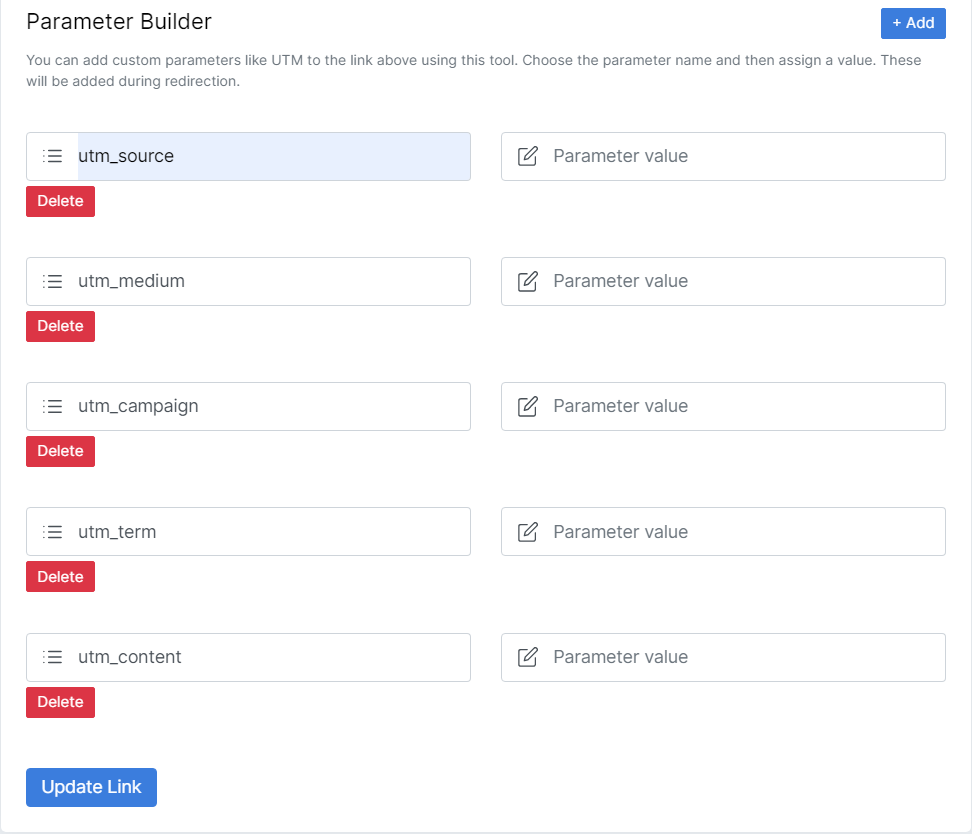
Content Outline
- Introduction to UTM codes and their importance in digital marketing
- What is a UTM builder, and how does it work?
- The benefits of using a UTM builder for your campaigns
- How to use a UTM builder to create custom UTM codes for your campaigns
- Best practices for using UTM codes in your campaigns
- Conclusion: The importance of using UTM codes and a UTM builder for your marketing efforts
- Bonus: Tips for organizing and managing your UTM codes with a UTM builder tool.
Introduction to UTM codes and their importance in digital marketing
Welcome to our blog post on UTM builders! If you're involved in digital marketing, you may have heard the term "UTM code" before. But what exactly are UTM codes, and why are they important?
UTM codes, also known as UTM parameters, are tags that you can add to the end of a URL. These tags allow you to track the effectiveness of your marketing campaigns by providing additional information to analytics tools like Google Analytics. With UTM codes, you can see exactly where your website traffic is coming from, whether it's from an email campaign, a social media post, or an advertisement.
Knowing where your website traffic is coming from is crucial for understanding the effectiveness of your marketing efforts. It allows you to see which campaigns are working and which ones aren't, so you can adjust your strategies accordingly. It also allows you to track conversions and measure the return on investment of your marketing campaigns.
In this blog post, we'll be discussing UTM builders, which are tools that help you create custom UTM codes for your campaigns. We'll go over how UTM builders work, the benefits of using them, and best practices for using UTM codes in your campaigns. By the end of this post, you'll have a solid understanding of UTM codes and how to use a UTM builder to track the success of your marketing efforts.
So, what exactly is a UTM builder, and how does it work?
A UTM builder is a tool that helps you create custom UTM codes for your marketing campaigns. It typically works by providing a simple interface where you can input the necessary information for your UTM code, such as the source (e.g. email, social media), medium (e.g. email, social media post), and campaign name.
Once you've inputted this information, the UTM builder will generate a unique UTM code that you can add to the end of a URL. When someone clicks on that URL, the UTM code will be sent to your analytics tool, allowing you to track the effectiveness of your campaign.
UTM builders can be very helpful for digital marketers, as they make it easy to create and track UTM codes without having to manually code them yourself. They also typically provide options for organizing and managing your UTM codes, making it easier to keep track of all your campaigns in one place.
In the next section, we'll go over the benefits of using a UTM builder for your campaigns. Stay tuned!
So, why should you consider using a UTM builder for your campaigns? Here are a few benefits:
-
Simplicity: UTM builders provide a simple interface for creating UTM codes, making it easy for anyone to use them, even if you don't have coding experience.
-
Efficiency: UTM builders save you time by automating the process of creating UTM codes. Instead of manually coding them yourself, you can simply input the necessary information and let the tool do the work for you.
-
Accuracy: UTM builders reduce the risk of errors when creating UTM codes. Manually coding UTM tags can be prone to mistakes, but using a tool ensures that your codes are accurate and properly formatted.
-
Organization: Many UTM builders also provide options for organizing and managing your UTM codes, making it easier to keep track of all your campaigns in one place.
-
Collaboration: If you work with a team, UTM builders can make it easier to collaborate on campaigns and track their progress.
Overall, using a UTM builder can help streamline your marketing efforts and provide valuable insights into the success of your campaigns. In the next section, we'll go over how to use a UTM builder to create custom UTM codes for your campaigns.
Benefits of using UTM Builder
Now that we've covered the benefits of using a UTM builder, let's go over the steps for creating custom UTM codes for your campaigns.
-
Choose a UTM builder: There are several UTM builder tools available, such as Google's Campaign URL Builder or Bitly's UTM Builder or Lillink UTM Builder. Choose one that meets your needs and fits your budget (if applicable).

-
Input the necessary information: Most UTM builders will ask for the same information, including the source (e.g. email, social media), medium (e.g. email, social media post), and campaign name. Depending on the tool, you may also have the option to add additional parameters, such as content or term.
-
Generate the UTM code: Once you've inputted the necessary information, the UTM builder will generate a unique UTM code that you can add to the end of a URL.
-
Test the UTM code: Before you use the UTM code in your campaign, it's a good idea to test it to make sure it's working properly. You can do this by adding the UTM code to a URL and visiting the URL yourself to see if it's being tracked in your analytics tool.
-
Use the UTM code in your campaign: Once you've tested the UTM code and confirmed that it's working properly, you can use it in your campaign. Just add the UTM code to the end of any URLs that you want to track, and your analytics tool will start collecting data on the traffic coming from those URLs.
Using a UTM builder is a simple and efficient way to create custom UTM codes for your campaigns. In the next section, we'll go over some best practices for using UTM codes in your campaigns.
Now that you know how to use a UTM builder to create custom UTM codes, here are some best practices to keep in mind when using UTM codes in your campaigns:
-
Use descriptive and consistent names: Choose descriptive and consistent names for your UTM parameters, such as "email_newsletter" or "social_facebook_promo". This will make it easier to understand the data and track the performance of your campaigns.
-
Use lowercase letters: UTM codes are case sensitive, so it's important to use lowercase letters to ensure that your analytics tool tracks the data accurately.
-
Don't use spaces or special characters: UTM codes don't allow spaces or special characters, so make sure to use hyphens or underscores to separate words.
-
Use a consistent structure: It's a good idea to use a consistent structure for your UTM codes, such as "source_medium_campaign". This will make it easier to organize and understand the data.
-
Keep it simple: Try to keep your UTM codes as simple as possible, as overly complicated codes can be difficult to track and analyze.
By following these best practices, you'll be able to effectively track the performance of your campaigns and make informed decisions about your marketing efforts. In the next section, we'll provide some tips for organizing and managing your UTM codes with a UTM builder tool.
Conclusion
In conclusion, UTM codes and UTM builders are essential tools for any digital marketer looking to track the performance of their campaigns. UTM codes provide valuable insights into the source of your website traffic, allowing you to see which marketing efforts are working and which ones aren't.
UTM builders make it easy to create custom UTM codes for your campaigns, saving you time and reducing the risk of errors. They also provide options for organizing and managing your UTM codes, making it easier to keep track of all your campaigns in one place.
By using UTM codes and a UTM builder, you'll be able to make informed decisions about your marketing efforts and optimize your strategies for maximum success. So if you're not already using UTM codes and a UTM builder in your campaigns, now is the time to start!
Bonus Tips
As a bonus, here are some tips for organizing and managing your UTM codes with a UTM builder tool:
-
Use a spreadsheet: Many UTM builder tools allow you to export your UTM codes to a spreadsheet, which can be a helpful way to organize and manage them. You can use the spreadsheet to keep track of the source, medium, campaign name, and other parameters for each UTM code.
-
Use tags or labels: Some UTM builder tools allow you to add tags or labels to your UTM codes, which can be a helpful way to organize them. For example, you could use tags like "social media" or "email" to group similar UTM codes together.
-
Use folders or groups: If your UTM builder tool allows it, you can use folders or groups to organize your UTM codes. This can be especially useful if you have a large number of campaigns, as it allows you to keep them organized and easily accessible.
-
Use a naming convention: Establishing a naming convention for your UTM codes can help you keep them organized and easy to understand. For example, you could use a structure like "source_medium_campaign" for all your UTM codes.
By following these tips, you'll be able to effectively organize and manage your UTM codes, making it easier to track the performance of your campaigns.


